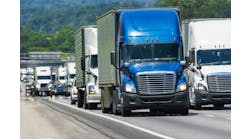Washington, D.C., bans hazmat shipments near Capitol building
Q What is the status and significance of the Washington, D.C., ban on hazmat moving through the U.S. Capitol area?
A Many people outside Washington, D.C., are watching the 90-day temporary ban adopted by the D.C. City Council and signed by D.C. Mayor Anthony Williams, prohibiting the transport of certain hazmat within 2.2 miles of the U.S. Capitol building.
The affected railroad — CSX Transportation — has filed for a preemptive declaratory order from the Surface Transportation Board and also has asked the District Court for an injunction against the ban. Others are expected to approach the U.S. Department of Transportation (DOT)for an administrative ruling. Many groups, industry and otherwise, have filed comments in the STB proceeding, including DOT, which commented to the effect that this local ban is preempted under a variety of provisions of existing law.
A few aspects of this situation are described as unique, which makes the outcome unpredictable. First, the primary basis upon which the local restriction was adopted is homeland security, not public safety. The endeavor will be made to show that the DOT safety regulations are insufficient in light of the security consequences of hazmat near the Capitol.
Second, the population purportedly exposed to hazmat dangers is Congress itself, a group known historically for protecting itself from the applicability of a wide range of laws imposed on the rest of us.
Third, most of the affected materials do not originate in Washington, nor are they consigned there — this is almost exclusively through traffic from which the locality derives no economic benefit.
These factors, which some people would claim makes this situation unique, are what in my view make it routine among matters arising under the Commerce Clause of the U.S. Constitution. Article I, Sec. 8, Clause 3 of the Constitution gives Congress the power "to regulate Commerce... among the several States and with the Indian Tribes."
It is natural for States and the communities within those States to think only of their own interests. In fact, it may be their legal obligation to think only of effects within their own borders. Drafters of the Constitution understood this human and legal reality and, from the beginning, knew that goods passing from jurisdiction to jurisdiction (and the carriers transporting those goods) had to be protected against local discrimination.
While traffic and other aspects of public safety relating to transportation generally may be better decided and applied locally where people know the roads and the school zones, the fundamental concepts of what might be transported, and how, has been assigned for nearly a century to the federal government. Recently federal transportation authority was augmented to include security as well as safety as part of the DOT's national mission.
Today it is the DOT that sets forth the rules on proper classification, description, packaging, marking, labeling, documentation and other hazard communication required for safe and secure global commerce. Only a national authority can maintain the perspective necessary to protect the country from local impediments driving cargo from one jurisdiction to another without consideration for the impact on all of us.
We know that if the District of Columbia, even in the name of protecting Congress, can push traffic away and into someone else's backyard, many other jurisdictions and tribes are ready with pen in hand to impose similar restrictions on through traffic in their communities. The local rule of necessity must be preempted and, if the locality still thinks it can make a valid case that it is unique, existing provisions of the DOT's law provide the locality with a forum to obtain a DOT waiver of preemption.
Lawrence Bierlein is a partner with McCarthy, Sweeney & Harkaway, P.C. in Washington, D.C. His practice is devoted to issues involving transportation of hazardous materials. He can be reached at 202.775.5560, [email protected].


